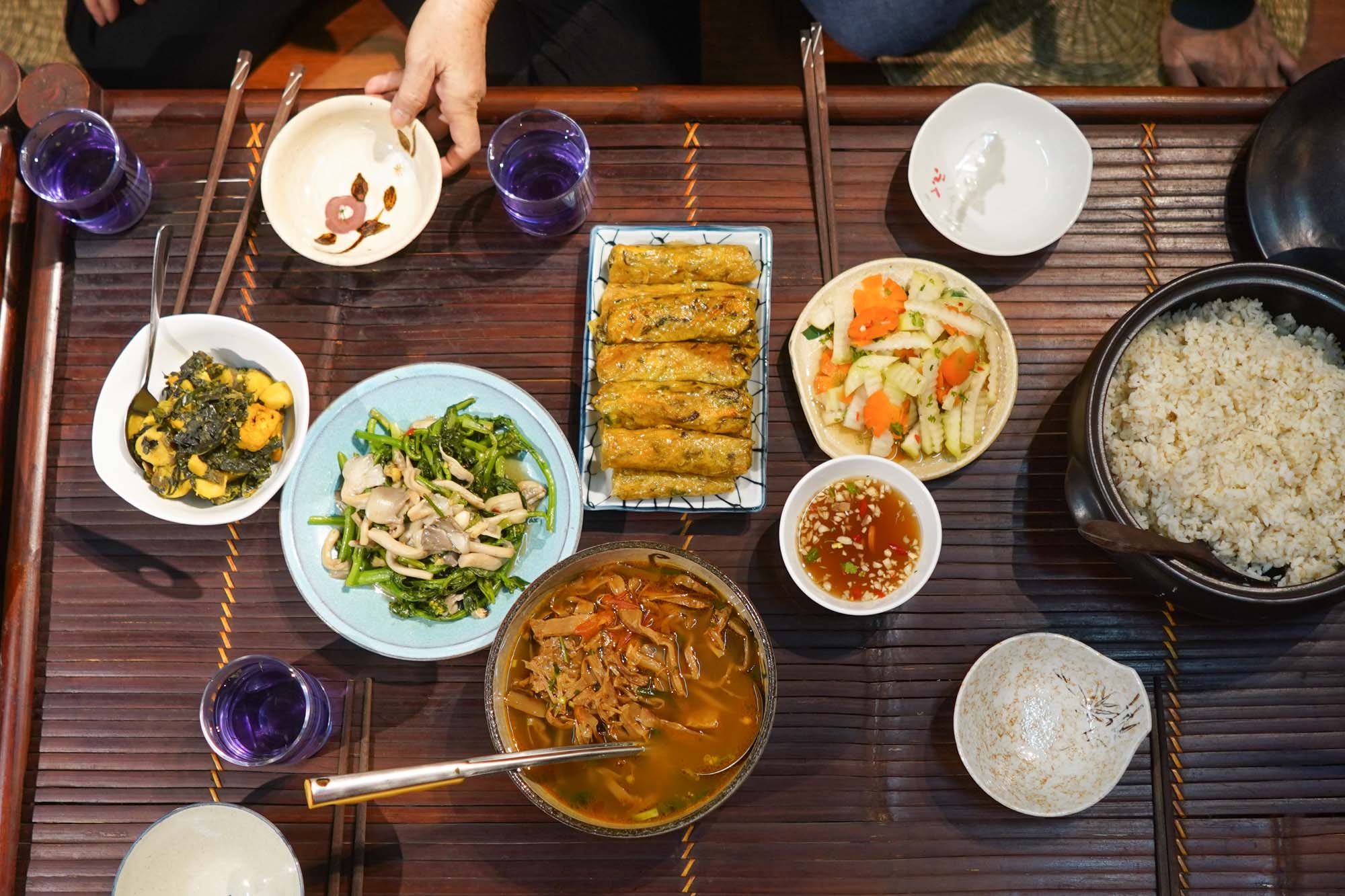Korean and Vietnamese cuisines are both known for their unique flavors and ingredients. Korean cuisine is bold and spicy, featuring seasonings like garlic, soy sauce, red pepper flakes, sesame oil, and ginger, while Vietnamese cuisine is lighter and more refreshing, featuring seasonings like fish sauce, lime juice, lemongrass, and chili peppers. Both cuisines offer a variety of meat and seafood dishes, as well as dishes made with noodles and rice, and a range of desserts and sweets. Whether you prefer bold and spicy or light and refreshing, Korean and Vietnamese cuisines have something for everyone to enjoy.
Introduction
It’s no secret that Asia has some of the best culinary traditions in the world. Among them, Korean and Vietnamese cuisines stand out with their unique flavors and ingredients. In this article, we will compare and contrast Korean and Vietnamese cuisines and highlight their key differences.
Flavors and Ingredients
Korean cuisine is known for its bold and spicy flavors. Korean dishes often feature a combination of sweet, sour, salty, and spicy tastes. The most common seasonings used in Korean cooking include garlic, soy sauce, red pepper flakes, sesame oil, and ginger. One of the most famous Korean dishes is kimchi, a spicy fermented vegetable dish that is eaten as a side dish at almost every meal.
Vietnamese cuisine, on the other hand, is lighter and more refreshing, with a focus on herbs and vegetables. Vietnamese dishes feature a delicate balance of sweet, sour, salty, and umami flavors. The most common seasonings used in Vietnamese cuisine include fish sauce, lime juice, lemongrass, and chili peppers. One of the most famous Vietnamese dishes is pho, a savory noodle soup made with beef or chicken broth and a variety of fresh herbs.
Meat and Seafood
Both Korean and Vietnamese cuisines feature a wide variety of meat and seafood dishes. In Korean cuisine, some of the most popular meat dishes include bulgogi (marinated beef), galbi (marinated short ribs), and samgyeopsal (grilled pork belly). Korean cuisine also features a variety of seafood dishes, such as grilled or fried fish, squid, and octopus.
Vietnamese cuisine also features a wide variety of meat and seafood dishes. Some of the most popular meat dishes include pho bo (beef noodle soup), bun cha (grilled pork meatballs), and com tam (broken rice with grilled pork). Vietnamese cuisine also features a variety of seafood dishes, such as cha ca (grilled fish with turmeric and dill) and banh xeo (Vietnamese crepes filled with shrimp and pork).
Noodles and Rice
Korean and Vietnamese cuisines both feature a variety of dishes made with noodles and rice. In Korean cuisine, some popular noodle dishes include japchae (stir-fried glass noodles with vegetables and beef) and naengmyeon (cold buckwheat noodles in a broth). Korean cuisine also features a variety of rice dishes, such as bibimbap (rice mixed with vegetables, meat, and chili paste) and fried rice.
Vietnamese cuisine also features a variety of noodle dishes, such as pho (noodle soup), bun bo hue (spicy beef noodle soup), and bun cha gio (vermicelli noodles with fried spring rolls). Vietnamese cuisine also features a variety of rice dishes, such as com tam (broken rice with grilled pork) and com chien (fried rice).
Desserts and Sweets
Both Korean and Vietnamese cuisines feature a variety of desserts and sweets. In Korean cuisine, some popular desserts include patbingsu (shaved ice with sweet red beans and fruit) and hotteok (sweet pancakes filled with brown sugar and cinnamon). Korean cuisine also features a variety of sweet rice cakes, such as songpyeon (rice cakes filled with sweetened sesame seeds or beans) and tteokbokki (spicy rice cakes).
Vietnamese cuisine also features a variety of desserts and sweets, such as che ba mau (a sweet dessert soup with red beans, green beans, and coconut milk) and banh chuoi (banana cake). Vietnamese cuisine also features a variety of sweet rice cakes, such as banh tet (sticky rice cakes filled with pork and mung beans) and banh bo (steamed rice cakes with coconut milk).
Conclusion
Korean and Vietnamese cuisines are both rich and flavorful, with their own unique styles and ingredients. While Korean cuisine is known for its bold and spicy flavors and meat dishes, Vietnamese cuisine is known for its light and refreshing flavors and vegetable dishes. Both cuisines have a wide variety of dishes made with noodles and rice, as well as a variety of desserts and sweets. Whether you prefer bold and spicy or light and refreshing, Korean and Vietnamese cuisines have something for everyone to enjoy.
